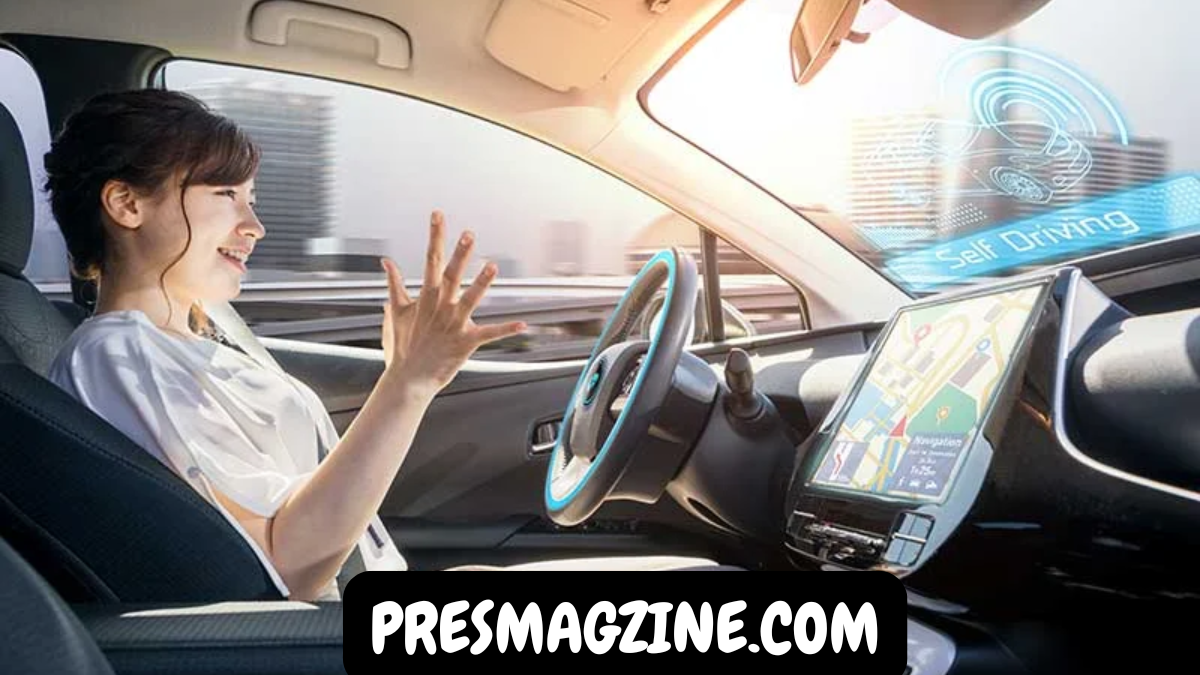Introduction to the Concept
The term daytimestar.com: Taipei self-driving gharry may sound unusual at first, but it brings together two powerful ideas: the rapid innovation in autonomous vehicles and the cultural richness of traditional travel in Taipei. The word gharry historically referred to a horse-drawn carriage used in parts of Asia. In modern terms, it has been reimagined as a small, compact transport option—this time powered by technology rather than animals. With Taipei emerging as one of Asia’s most tech-forward cities, the marriage of tradition and modernity has become a key theme in its tourism and urban planning.
Self-driving technologies have been reshaping mobility worldwide, and Taipei has been experimenting with autonomous shuttles and transport solutions to make travel easier, safer, and more sustainable. When linked with the branding of daytimestar.com, the idea positions itself as a futuristic yet accessible way to experience Taiwan’s capital city.
Why Taipei Is the Right Place for Self-Driving Transport
Taipei is not only the capital of Taiwan but also a hub of technology, innovation, and culture. The city already has a reputation for pioneering public transportation systems, including its world-famous MRT, reliable bus services, and modern bike-sharing programs. Adding autonomous vehicles into the mix is a natural progression.
The dense urban layout, the steady influx of Daytimestar.com: Taipei Self-Driving Gharry and the city’s commitment to sustainable smart-city initiatives make it an ideal testing ground. Self-driving gharrys, promoted through platforms like daytimestar.com, could become a unique way to explore both historical landmarks and modern attractions without the stress of navigating foreign streets or dealing with traffic congestion.
The Cultural Blend of Old and New
The concept of a gharry evokes an older style of travel, reminiscent of horse-drawn carriages that once defined city transport across Asia. By attaching the term to modern self-driving vehicles, Taipei is blending nostalgia with cutting-edge technology.
Imagine stepping into a compact autonomous car, styled in a way that reflects the traditional look of a gharry, but equipped with sensors, GPS, and artificial intelligence that allow it to drive safely through Taipei’s busy streets. This fusion reflects the city’s character: deeply rooted in history while boldly stepping into the future.
Technology Behind the Self-Driving Gharry
The idea of a self-driving gharry promoted on daytimestar.com relies on advanced AI systems. Autonomous vehicles function through a combination of sensors, cameras, radar, and LiDAR technology. These elements work together to create a 360-degree view of the surroundings, allowing the vehicle to detect obstacles, follow traffic rules, and ensure passenger safety.
Taipei’s infrastructure already supports smart traffic management, which would make it easier for autonomous gharrys to function smoothly. By connecting these vehicles with digital platforms like daytimestar.com, users can book rides, track vehicles in real time, and customize travel routes to suit sightseeing or daily commuting.
Tourism Opportunities
One of the strongest appeals of the self-driving gharry concept is tourism. Visitors to Taipei often seek convenient ways to explore night markets, temples, museums, and cultural districts. While public transportation is efficient, tourists may desire a more personalized journey.
The self-driving gharry could offer guided audio tours, with multilingual support, as it navigates through the city. This would turn an ordinary ride into an interactive cultural experience. Imagine sitting comfortably in the gharry as it glides past Chiang Kai-shek Memorial Hall or Taipei 101, while a soft voice explains the history, significance, and local anecdotes connected to each landmark.
Environmental Impact
Taipei has committed itself to green energy and sustainable development. Many self-driving gharry concepts are built on electric vehicle platforms, which align with these goals. Reducing emissions and easing traffic congestion are two major priorities for the city.
By encouraging both residents and tourists to use electric autonomous gharrys, Taipei reduces its reliance on traditional fuel-powered taxis and cars. This contributes not only to cleaner air but also to a quieter, more pleasant urban environment.
Safety and Reliability
The biggest concern with any autonomous transport project is safety. Self-driving gharrys in Taipei are designed to follow strict safety regulations. The technology is continually tested in controlled environments before being introduced to the public.
Artificial intelligence algorithms allow the vehicle to predict pedestrian movements, respond to sudden traffic changes, and follow road signs with precision. In addition, remote monitoring systems ensure that human operators can intervene if necessary. This layered approach ensures reliability for both tourists and locals.
The Role of daytimestar.com
The name daytimestar.com suggests a platform or service that acts as the gateway to booking, learning about, and experiencing Taipei’s self-driving gharrys. Such a website would likely serve multiple functions: an information hub, a reservation system, and possibly even a community platform where users share experiences.
By consolidating everything into one digital space, daytimestar.com becomes a trusted brand for people eager to try this modern form of transport. In a competitive tourism market, branding plays a huge role in shaping perception, and connecting self-driving technology with an accessible website makes it easier for visitors to engage.
Challenges Ahead
Despite the excitement, there are challenges to making the self-driving gharry a mainstream option in Taipei. First, public acceptance of autonomous vehicles still requires trust-building. Many people hesitate to step into a car without a human driver.
Second, regulatory frameworks must evolve to handle legal responsibilities in case of accidents or malfunctions. Taipei, like many cities, is still shaping the policies around autonomous transport. Finally, the cost of development, maintenance, and operation may initially be high, requiring strong partnerships between technology firms, tourism boards, and government agencies.
Future Outlook
The future of daytimestar.com’s Taipei self-driving gharry project looks promising if these challenges are addressed. With continuous advancements in AI, better charging infrastructure for electric vehicles, and growing public curiosity, the concept could become a signature attraction for Taipei.
In the long run, self-driving gharrys could expand beyond tourism, serving as an alternative daily transport option for locals. Schools, offices, and residential neighborhoods could integrate autonomous shuttles into everyday life, making Taipei a global leader in smart urban living.
Frequently Asked Questions
What is meant by “daytimestar.com: Taipei self-driving gharry”?
It refers to a modern autonomous vehicle concept linked with the branding of daytimestar.com. The “gharry” symbolizes traditional carriage travel, while in Taipei it represents compact, AI-driven vehicles for city transport and tourism.
Why is Taipei focusing on self-driving technology?
Taipei is a hub for innovation and sustainability. By introducing autonomous vehicles, the city reduces traffic congestion, lowers emissions, and enhances tourism experiences with smart and futuristic transport solutions.
Is the self-driving gharry safe to use?
Yes, safety is a top priority. The vehicles are equipped with sensors, cameras, and real-time monitoring systems to ensure reliable navigation. They undergo extensive testing before public release.
Can tourists easily book a ride?
The idea is that platforms like daytimestar.com would allow tourists to book rides online, select travel routes, and even enjoy guided cultural tours while using the self-driving gharry.
How does the self-driving gharry help the environment?
Most models are electric, meaning they produce no direct emissions. By reducing reliance on fuel-powered taxis and private cars, they contribute to cleaner air and quieter streets in Taipei.
Will locals also benefit from this system?
Absolutely. While the initial focus may be on tourists, locals can use self-driving gharrys for daily commuting, short-distance errands, or as eco-friendly alternatives to traditional transport.
What challenges might arise with this project?
Public trust, regulatory frameworks, and high initial costs are the main challenges. However, as technology advances and governments support green mobility, these barriers can be overcome.
Is the gharry concept unique to Taipei?
The term “gharry” is not unique to Taipei, but the idea of rebranding it into an autonomous, culturally themed vehicle for urban transport is a distinctive innovation that highlights Taipei’s mix of tradition and modernity.
Could this idea spread to other cities?
Yes, if successful in Taipei, the self-driving gharry could serve as a model for other Asian cities looking to merge cultural tourism with modern technology in sustainable transport.
How soon will the self-driving gharry become mainstream?
The timeline depends on ongoing testing Daytimestar.com: Taipei Self-Driving Gharry regulatory approval, and public adoption. While pilot projects may already exist, widespread availability could take a few years as the system matures.
Conclusion
The concept behind daytimestar.com: Taipei self-driving gharry represents more than just a new mode of transport. It is a symbol of how cities can blend cultural heritage with modern technology to create sustainable, safe, and engaging experiences for both locals and visitors.


